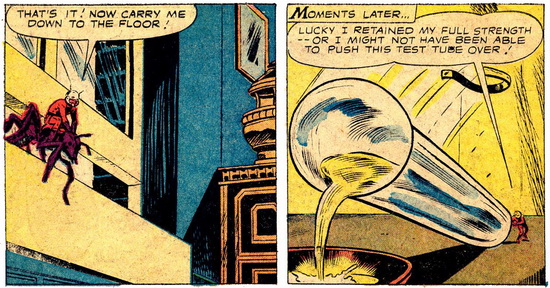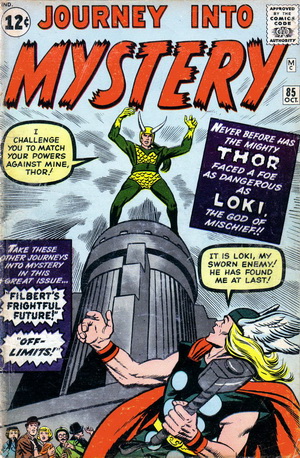
Published: October, 1962
Script: Larry Lieber
Pencils: Jack Kirby
Inks: Dick Ayers
Letters: Art Simek
When it comes to Loki, I have been spoiled by Hollywood. Before I saw Thor, and The Avengers, I met Loki only briefly in these early comics. At the time, I thought he looked pretty goofy, but then a lot of Marvel villains from the 1960’s look goofy, so it didn’t bother me too much. But after I saw Tom Hiddleston’s Loki in the recent movies…well, Loki’s looking not quite so goofy anymore.
In fact, I want to go on record right now: I am exceptionally impressed by Mr. Hiddleston’s interpretation of Loki. He’s so full of himself. That smile…when he’s being thoroughly despicable. That air of regal entitlement. I can’t imagine another actor doing a better Loki. Hiddleston strikes just the right balance between mere mischief and absolute evil. And he dresses really sharp too.
Of course, all characters in Marvel movies dress really sharp, and act precisely as you would expect them to act. The die may have been cast in the early 60’s, but these recent cinematic representations of both villains and superheroes speak volumes about the logical evolution that has taken place over the last half century.

I knew what Thor looked like before I saw the movies, and even before I began reading Marvel comics. Thor’s red cape and winged helmet are iconic. We wouldn’t expect him to look any other way. But then, surprisingly, as he appears in these movies, though the cape is still there, the helmet’s gone. Yet, that’s okay. Because now he’s all in black, armored to the hilt, and lookin’ fine. Oh, yeah! (As ZZ Top once said, “Every girl crazy ’bout a sharp dressed man.”)
However, I think because I have so little pre-conceived notion about how Loki is SUPPOSED to look, at this point, in my mind, he’s supposed to look the way he does in the movies. That’s been set as my “standard” for Loki. And the way he looks in the 1960’s comics is just…well, just plain foolish.
Sorry. Any of you old-time purists may want to hate me now, but I’m simply being honest. To me, 1962 Loki looks silly.
He strikes me as silly, in his green tights, and yellow-scaled underpants. And yes, he has the horns, but they look like his mother sewed them on by hand as she completed Simplicity pattern #288 Loki Halloween Costume. I guess that’s the problem: Loki looks like he’s wearing a costume. Remember: even Stan the Man and his cronies jokingly referred to their costumed super-beings as “long underwear characters.” So I think on some level, even the creators felt it was silly. I’m just saying that to me, Loki is currently on top of the Silly List.
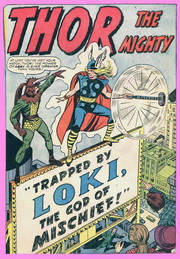 The “splash” is the introductory page before the story really gets started. Very often it’s a full page, and most usually contains the story title. It sets the stage for all that is about to come.
The “splash” is the introductory page before the story really gets started. Very often it’s a full page, and most usually contains the story title. It sets the stage for all that is about to come.BROTHERS?
Somehow I’ll just have to get past all that and focus on the story. But immediately, here’s another problem, at least for me. Apparently in these early comics, Loki is not Thor’s brother. In these first stories, Stan stuck much closer to the Norse mythology. Later, he will make Thor and Loki brothers, and I think that’s when things really start to heat up, because not only do we have demi-gods at odds, but also a healthy serving of sibling rivalry. And who doesn’t like a nice dollop of sibling rivalry to top off their epic battle of Good vs. Evil?
But for now, we start simply, with demi-gods.
On the splash page we learn that Loki thinks his powers are even greater than Thor’s. Full of himself? Yes. Chip on his shoulder? Probably. To be taken seriously? We’ll see.
IN THE BEGINNING…
We begin with the introduction of Asgard and the rainbow bridge, called Bifrost. The gods have condemned Loki to be entrapped in a tree. We aren’t told WHY he’s imprisoned, but…God of Mischief? Okay? Enough said?
The God of Mischief employs his trademark trickery to escape imprisonment and immediately tracks down Thor on planet Earth. He disguises himself as a normal person and causes more mischief to force Thor to reveal himself, then immediately reveals himself to Thor. Behold:
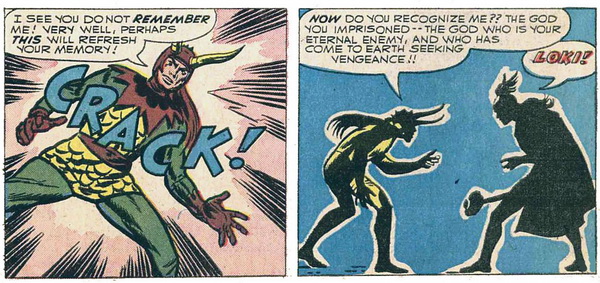
This so perfectly exemplifies something that I simply love about Marvel comics. Very often, when a new character suddenly appears, someone will shout his name, followed by double exclamation points. Here we do not have the classic double exclamation points, but note Thor’s proclamation of “LOKI!” in bold red letters. Surely red lettering trumps double exclamation points any day, don’t you think?
I so enjoy this in Marvel comics that even as I write, I’ve decided to create a page at the top of this blog called “Hey look! It’s…!” and here I shall gather examples of this amusing and effective narrative practice.
But on with our story…
MISCHIEF
Loki lures Thor into the sky, where sunlight reflecting on Thor’s hammer allows Loki to hypnotize him. Loki tries to get the hammer, but even a hypnotized 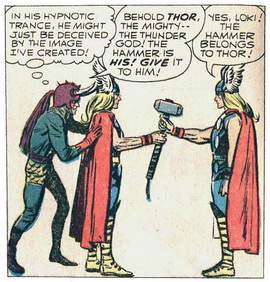 Thor will not let go of Mjolnir. So once again, Loki works his mischief and tricks Thor into giving up the hammer.
Thor will not let go of Mjolnir. So once again, Loki works his mischief and tricks Thor into giving up the hammer.
Now that Thor is disarmed, Loki instructs him to set free all the beasts at the zoo. (Is that mischievous enough for you?) Of course, there’s one thing Loki doesn’t know: after 60 seconds without the hammer, Thor reverts to Blake. The hypnotic spell broken, Blake retrieves Mjolnir, reverts to the Thunder God, and pursues Loki.
A 1980’s musical montage ensues, as Thor and Loki scuffle back and forth in various locations around the city. (My preference: The Doobie Brothers’ Takin’ It to the Streets.) Finally Thor proves victorious and lugs Loki to the top of the Empire State Building, where he ties Loki to Mjolnir and flings him back to Asgard. The hammer, of course, returns to Thor, as it always does.
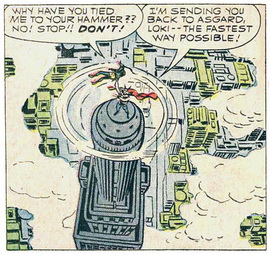 So! That Loki’s quite a troublemaker, hmmm?? Right now, he seems less like a serious threat, and more like a pesky little brother (“Open the cages in the zoo! Hehe hehe…”). In the future, I’m sure, he’ll cause much more trouble. Loki shows incredible potential, but he’s not there yet. He’s clever, bitter, and he’s a god, for crying out loud! At some point he may top even Doctor Doom on my Villain Valuation, but for now, I’m placing him just below. Besides, even at less than full steam, there’s no question that Loki outvillains Mole Man.
So! That Loki’s quite a troublemaker, hmmm?? Right now, he seems less like a serious threat, and more like a pesky little brother (“Open the cages in the zoo! Hehe hehe…”). In the future, I’m sure, he’ll cause much more trouble. Loki shows incredible potential, but he’s not there yet. He’s clever, bitter, and he’s a god, for crying out loud! At some point he may top even Doctor Doom on my Villain Valuation, but for now, I’m placing him just below. Besides, even at less than full steam, there’s no question that Loki outvillains Mole Man.
Most of all, I’m impressed with Loki’s desire to make trouble, simply because it IS trouble. In this story, at least, he’s not out for world domination, he doesn’t want empires to worship him. Sure, he has a grudge against Thor, but that’s personal, and does not necessarily make him a “bad person.” The scariest thing about Loki is that he enjoys being bad. He likes mischief and trouble. He’s bad for badness’ sake. He has no noble motivations, like Sub-Mariner, who seeks revenge for his lost kingdom. He’s not even interested in material gain, like the Ringmaster. No, he just wants to make trouble because he loves trouble. How can you placate or reason with a villain like that?
FICKLE FOSTER
Even though Jane Foster is not instrumental in this story, she does make a brief appearance. First, after Thor has restored several victims of Loki’s mischief, Jane gazes at him in adoration, proclaiming “You were WONDERFUL!!” However, on the very next page, she swoons over Loki, because he has a “lovely name,” and “seems so dashing” in his yellow-scaled underpants.

This only reinforces what I said about Jane last time. She’s a hopeless romantic who will crush on any handsome man in a costume, whether it’s Fabio working his deeply unbuttoned frilly pirate shirt, or Loki sporting scaly underpants. (Wonder how she would feel about Iron Man or Spider-Man?)
NEW YORK, NEW YORK! IT’S A WONDERFUL TOWN!
Our Marvel characters live in New York City, and it was nice to see the Empire State Building making a cameo appearance. I’ve never really been a fan of DC comics, except for the TV series Smallville, but I think many people, whether or not fans of the comics, know that Superman hangs out in Metropolis and Batman lives in Gotham City. Of course, those are both fictional locations. In some ways, it works better to have comic stories set in fictional locations. It kind of lends to that whole feeling of…y’know, FICTION. Anything can happen; the fantastic seems more at home there.
But in another way, I also like New York City as a backdrop for the Marvel action. We see and know the landmarks. I also like when we have an occasional mention or appearance by a historical figure, such as JFK or Ed Sullivan. That makes it all so much…y’know, LESS fictional. And that has its charms, as well. Know what I mean??
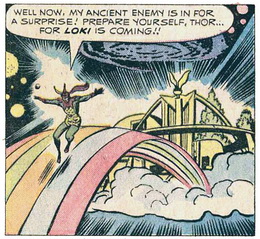 But if it’s fictional locations you’re craving, here in this third Thor comic we are introduced to Asgard, home of the Norse gods. The city appears to be made of gold, and we see a “rainbow bridge” that looks like something My Little Pony and the Smurfs might come skipping across at any moment. (I was so relieved with the much improved depiction of the rainbow bridge in the recent movies.)
But if it’s fictional locations you’re craving, here in this third Thor comic we are introduced to Asgard, home of the Norse gods. The city appears to be made of gold, and we see a “rainbow bridge” that looks like something My Little Pony and the Smurfs might come skipping across at any moment. (I was so relieved with the much improved depiction of the rainbow bridge in the recent movies.)
TANGENT
Forgive my flippancy. Again, I’m not putting down these early comics. Under the circumstances of it being 1962 and having to write and illustrate numerous titles each month that would be published on newsprint for a whopping twelve cents a pop, I think Stan and company did a FABULOUS job! I sometimes wonder if the original creators in these early days of Marvel comics could have ever even dreamed that someday their little twelve cent stories might inspire something like The Avengers, where Thor and Loki battle it out in Dolby digital sound, on an IMAX 3D screen, with “special effects” way beyond split screen, blue screen or rotoscope. I wonder if back in the day, Stan and company ever imagined that people worldwide would pay over a BILLION dollars to be entertained by tales of Thor and his nemesis Loki.
The fact that people worldwide are indeed shelling out big bucks for these stories tells you one thing: they must be good stories. If the foundation is not good, the house will crumble. But in the Marvelous Zone, the foundation is good. It’s all good. The House of Marvel stands, and it appears, will continue to stand, for many ages to come.
![]() What’s up next? I can’t tell you, because it’s a big “secret.” But join me next time, when I take a dystopian detour in the Marvelous Zone!
What’s up next? I can’t tell you, because it’s a big “secret.” But join me next time, when I take a dystopian detour in the Marvelous Zone!
| Want to read this comic on your computer? Marvel has a scan! Want to own this story? Buy the Masterworks! |

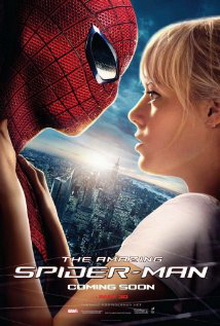 It’s good, but not great.
It’s good, but not great.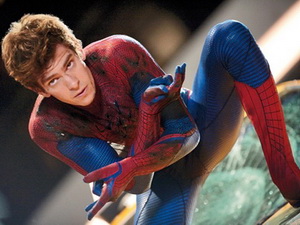 What a long time it took getting there! As far as I’m concerned, this all would have worked just as well if the filmmakers had plopped us down somewhere in the middle of the Spider-Man mythos and said “Okay. Spidey… Lizard… GO!”
What a long time it took getting there! As far as I’m concerned, this all would have worked just as well if the filmmakers had plopped us down somewhere in the middle of the Spider-Man mythos and said “Okay. Spidey… Lizard… GO!”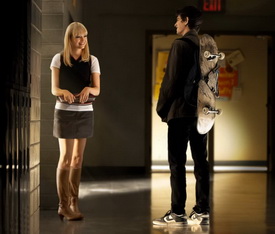 Afterwards, once he’s put on the suit…he’s good, with all that annoying chattering at his opponents. But it’s as Peter that he really shines.
Afterwards, once he’s put on the suit…he’s good, with all that annoying chattering at his opponents. But it’s as Peter that he really shines.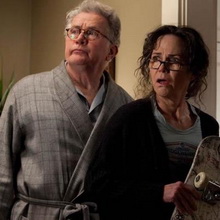 Martin Sheen and Sally Field portray Uncle Ben and Aunt May. Of course, in the comics (and the first set of movies) these characters are both a lot older (especially Aunt May), but as Russ points out, it never really made sense that teenaged Peter would have an octogenarian aunt and uncle. So it works to have solid, classic actors in these solid, classic roles.
Martin Sheen and Sally Field portray Uncle Ben and Aunt May. Of course, in the comics (and the first set of movies) these characters are both a lot older (especially Aunt May), but as Russ points out, it never really made sense that teenaged Peter would have an octogenarian aunt and uncle. So it works to have solid, classic actors in these solid, classic roles.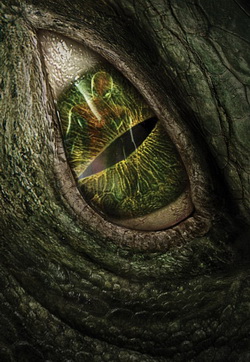 Basically this ends up being a monster movie, Spider fights Lizard, but I guess that’s all right, because after all, these are comic book characters. Personally, though, I like my villains to be a little more intellectual, conniving, evil and dangerous. Well…yes, there is danger, but thinking back to the earlier movies, it seems Dr. Octopus and Green Goblin gave Spidey a little more run for our money.
Basically this ends up being a monster movie, Spider fights Lizard, but I guess that’s all right, because after all, these are comic book characters. Personally, though, I like my villains to be a little more intellectual, conniving, evil and dangerous. Well…yes, there is danger, but thinking back to the earlier movies, it seems Dr. Octopus and Green Goblin gave Spidey a little more run for our money.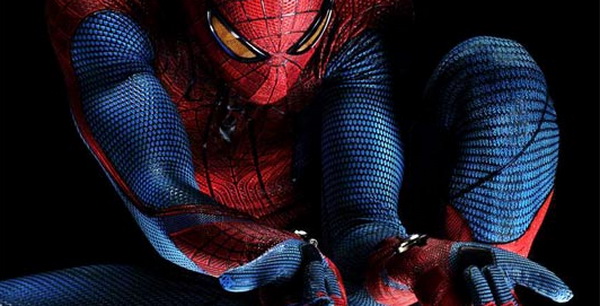
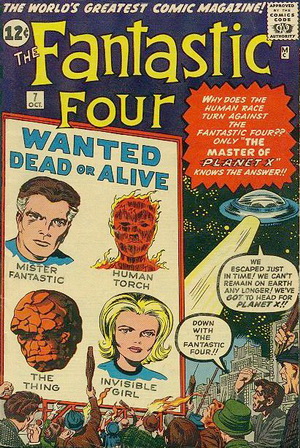
 Burdened by the canister, Kurrgo misses the flight from the doomed planet, and is presumably destroyed along with Planet X.
Burdened by the canister, Kurrgo misses the flight from the doomed planet, and is presumably destroyed along with Planet X.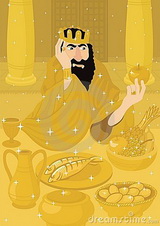 at his reflection in the lake, and you’ve got an Aesop’s Fable. The Greeks have their King Midas, Shakespeare gave us MacBeth. And American film shows us what a greedy need for money and power can lead to in movies such as Wall Street, Indecent Proposal, Treasure of the Sierra Madre, and of course, Citizen Kane, to name a few.
at his reflection in the lake, and you’ve got an Aesop’s Fable. The Greeks have their King Midas, Shakespeare gave us MacBeth. And American film shows us what a greedy need for money and power can lead to in movies such as Wall Street, Indecent Proposal, Treasure of the Sierra Madre, and of course, Citizen Kane, to name a few. Or was he simply saying his superheroes have better things to do?
Or was he simply saying his superheroes have better things to do? 
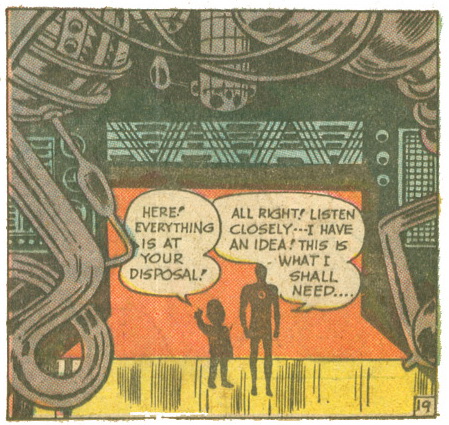 , who, it turns out, in addition to being a industrial pioneer, is also a genius, billionaire playboy philanthropist. These are great characters! They have skills that move the stories along, but even better, they’re downright SEXY.
, who, it turns out, in addition to being a industrial pioneer, is also a genius, billionaire playboy philanthropist. These are great characters! They have skills that move the stories along, but even better, they’re downright SEXY. 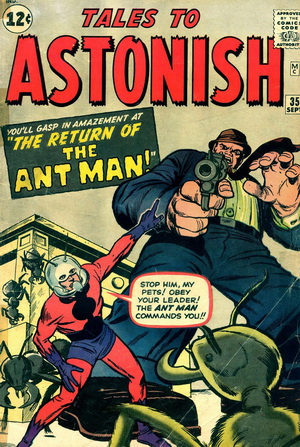
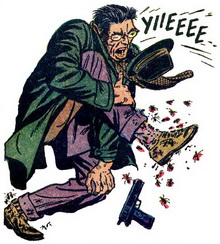 Tiny Pym loosens the ropes around his bound assistants, and the ants bite the Commies till they yell “YIIEEEE” and drop their guns. Without their weapons, “those murderous Reds” are a pushover, easily captured by the now-freed assistants.
Tiny Pym loosens the ropes around his bound assistants, and the ants bite the Commies till they yell “YIIEEEE” and drop their guns. Without their weapons, “those murderous Reds” are a pushover, easily captured by the now-freed assistants. IRONY AND IMPROVEMENTS
IRONY AND IMPROVEMENTS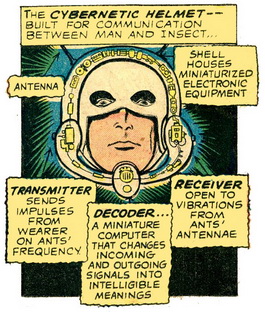 I like these early stories where we see Stan refining the attributes of his heroes. The helmet and the protective suit are a given. Pym is not going to be able to proceed without them.
I like these early stories where we see Stan refining the attributes of his heroes. The helmet and the protective suit are a given. Pym is not going to be able to proceed without them.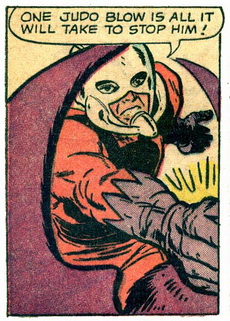 Pym apparently didn’t plan on it. Did he make a serendipitous “error” while creating the second batch? Does it make sense? Or perhaps there is no real reason for this development beyond Stan realizing that it would work well in future stories if Ant-Man could have super strength. When we’re talking about people shrinking to the size of an ant, “making sense” doesn’t really need to be one of our top priorities.
Pym apparently didn’t plan on it. Did he make a serendipitous “error” while creating the second batch? Does it make sense? Or perhaps there is no real reason for this development beyond Stan realizing that it would work well in future stories if Ant-Man could have super strength. When we’re talking about people shrinking to the size of an ant, “making sense” doesn’t really need to be one of our top priorities.